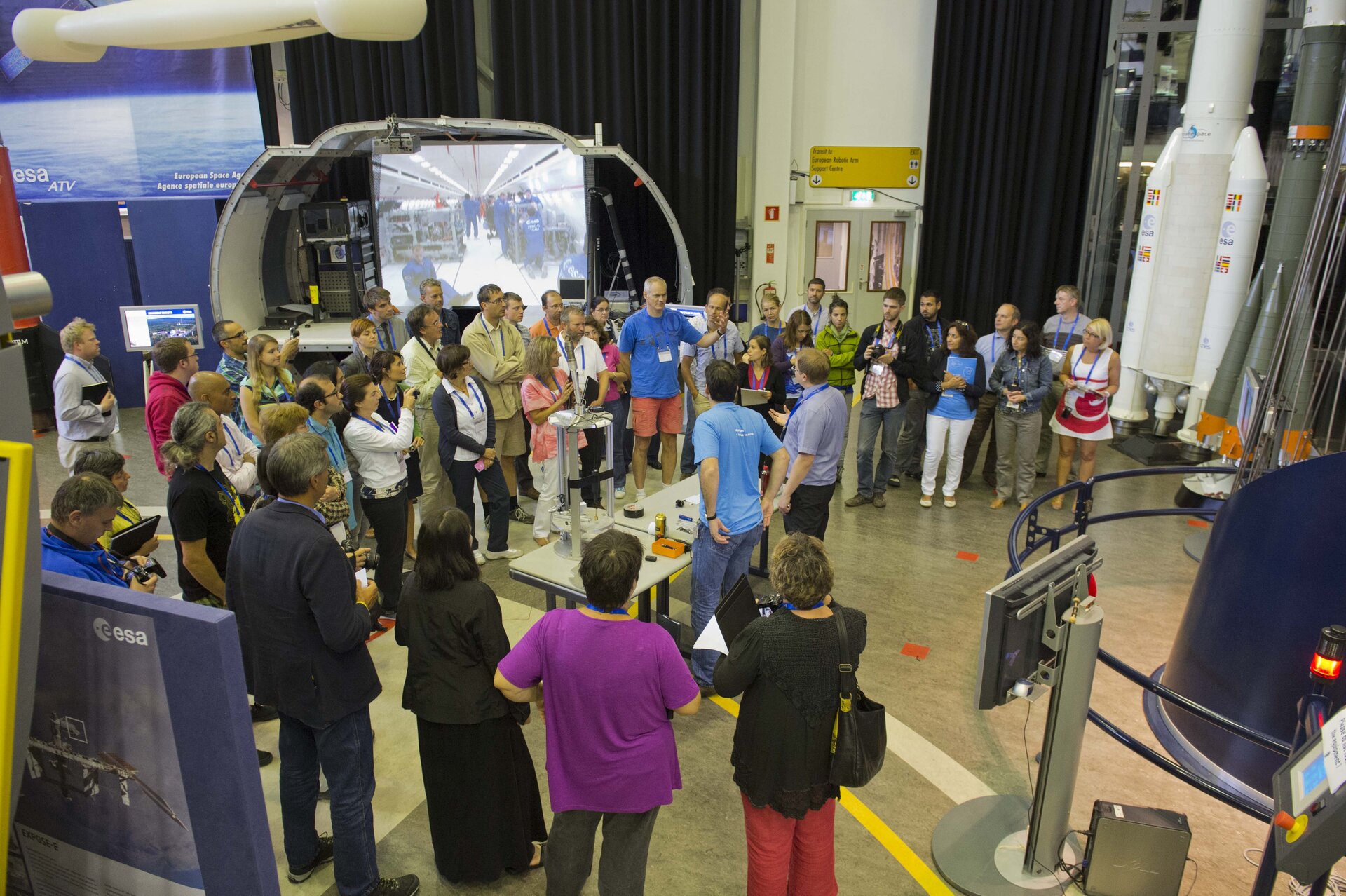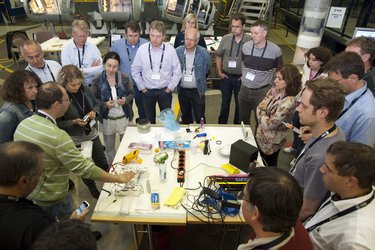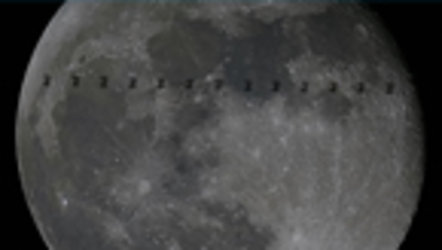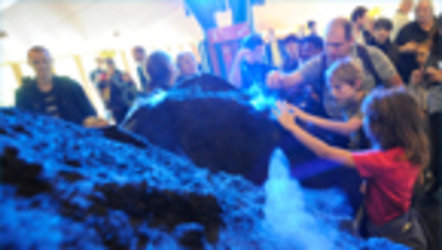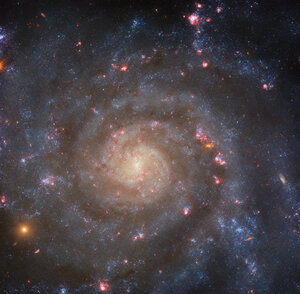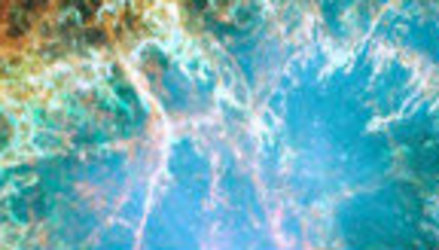Four days of inspiration and experimentation at ESA’s 2013 summer workshop for teachers
Hosted at ESTEC, ESA’s centre in the Netherlands, the 4th ESA Summer Workshop for Teachers brought together 40 secondary school teachers for an intense programme of lectures and demonstrations of activities that can be performed in the classroom.
The teachers came from 14 European countries to be shown how the interdisciplinary nature of space can be a powerful tool for teaching in schools. The workshop is designed as a special opportunity for teachers to develop new skills and network with their peers from across Europe.
During the 4-day workshop, participants were presented with innovative and motivating ways to use space as a means of engaging students in Science, Technology, Engineering and Mathematics (STEM) related subjects, all inspired by the wealth of ESA’s missions.
One of the sessions focused on spacecraft operations, one of ESA’s core activities. This included flight dynamics and spacecraft navigation. The science and technology behind all of this can be reproduced in the classroom and connected with many curriculum topics.
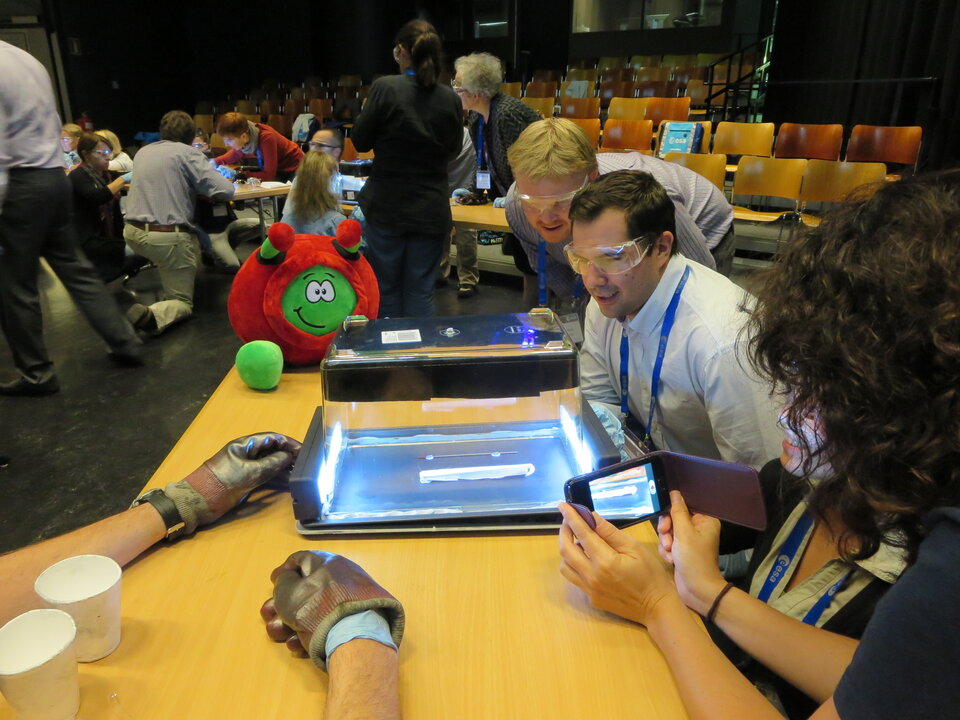
As part of this session a presentation was made about Funcube, a small educational cubesat. It will allow students to receive live telemetry and data about a material science experiment that is running on board. Students will be comparing the results from the orbital experiment with a similar one they can perform in the classroom.
The teachers were also shown how to build a classroom cloud chamber. This is a particle detector that reveals the passage of certain forms of natural radiation. Because such radiation can present a hazard to astronauts, the cloud chamber is a very powerful way to demonstrate the challenges of space exploration and show how we can research such phenomena on Earth. The teachers were enthusiastic about the results and about the feasibility of using such an experiment in their lessons.
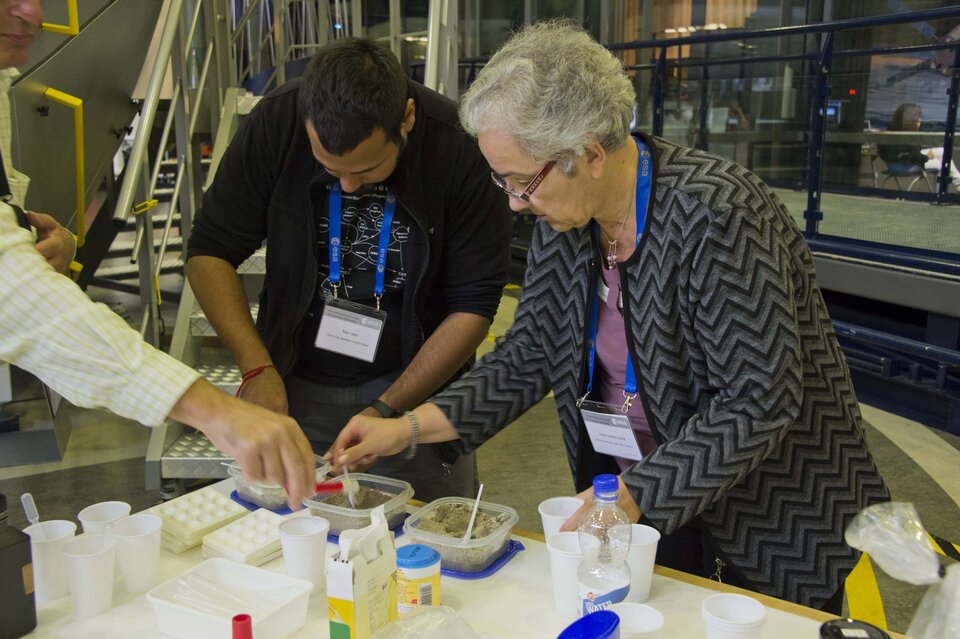
Other sessions included ‘Mapping the Milky Way with Gaia’. This concentrated on the science behind the upcoming Gaia mission, which is going to be launched at the end of this year. It will chart one billion stars in our Galaxy to produce the largest, most accurate three-dimensional star map ever. The teachers were shown practical classroom activities that demonstrate the principles Gaia will use to measure distances and construct its celestial atlas.
The teachers applied for places back in May, explaining how they would disseminate the resulting lessons to a wider community of students and other teachers. Networking was an integral part of the workshop and something that was appreciated by the participants. "This has been inspiring and fun, and being able to share experiences with other teachers is a real opportunity," said Helder Jose Pereira, a teacher from Portugal.
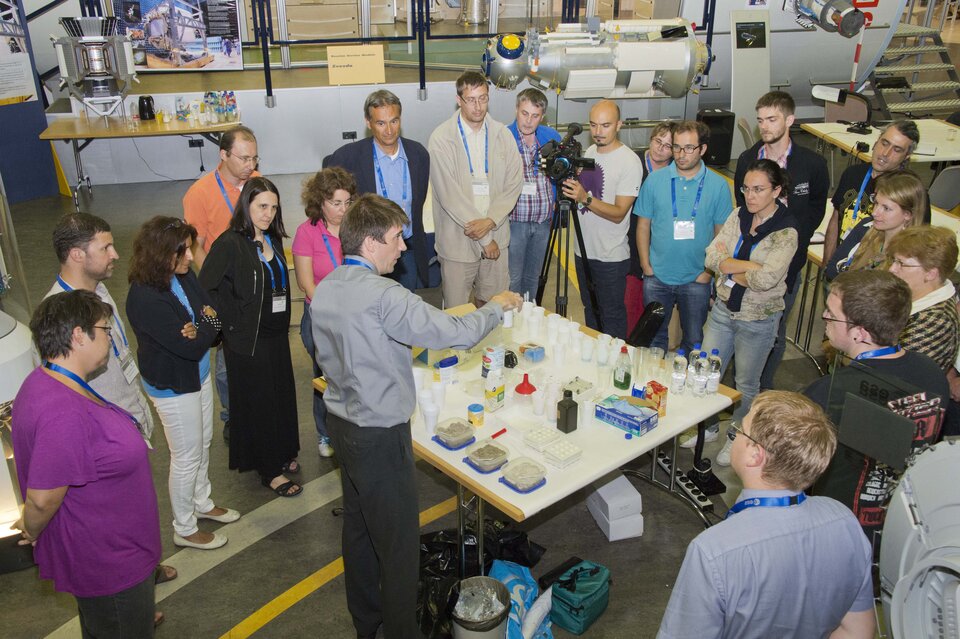
Another successful session took inspiration from Arthur Conan Doyle’s Sherlock Holmes novels. Teachers had to perform experiments as if they were detectives who needed to understand why an astronaut blacked out during a spacewalk and communications were interrupted. Was it the extreme cold of space, the ultraviolet radiation, the solar radiation or the microgravity that caused the accident?
Other hands-on activities included retrieving eye-catching solar images from the SOHO (SOlar Heliospheric Observatory) data archive and using quotations from Jules Verne’s classic novels ‘From the Earth to the Moon’ and ‘All around the Moon’ to devise classroom experiments to test the validity of Verne’s imagined descriptions of space flight and rocket propulsion.

It was not just the teachers who felt enriched by the experience. Anu Ojha, Director of the National Space Academy, National Space Centre, UK, presented the session on ‘Mars as an Abode for Life’. Afterwards he said, “It has been a privilege to be with so many outstanding teaching practitioners, scientists and engineers from across Europe, united in the goal of nurturing the next generation of young minds who will keep Europe’s space ambitions alive.”
This sentiment was echoed by the teachers themselves. “This is really exciting, especially with recent scientific information about Mars exploration, plus all the experiments we can actually do with the students in the classroom," said Bettina Ogbuagu from Austria.
And with the new term looming, it will not be long before the teachers will be doing just that.


